SMPS are notorious for poor CMRR due to stray pF leakage in the transformer. CM chokes in the primary are included to attenuate this. Scope probes are notorious for picking up radiated LdI/dt from a long ground wire inductance ESL~1nH/mm and response > 20MHz with the coax capacitance. Thus impedances are best to be low and matched.
As a single-ended 10:1 scope probe is not balanced, induced CM noise can be inverted to DM noise as a false reading.
When testing a power supply for accurate capture of the differential DC and spectrum, the best practice is to use;
a) AC coupled 1:1 coax 50 Ohm terminated DSO (negligible load for most DC power)
b) differential FET probes
c) 10:1 probe calibrated with coil spring probe for low ground ESR and ESL
d) differential balanced 10:1 probes in Math A-B for a DSO
I prefer method c) for quick results. This is a Tek accessory but can be made from resistor steel wire in a pinch. They use a copper-plated spring. Having the +/- test points within 1cm of the RF cap should give the best results.

If you want to measure the CM noise or Vcm and CM impedance from leakage caps, that is a different test from the above Vdm. Try to attenuate the CM noise by measuring with respect to AC gnd on the floating DC output, then shunt the probe with a known C to reduce the noise by 50% to estimate leakage impedance. Use 100pF to 1nF as a starting point with a 10M Probe and short ground lead.

